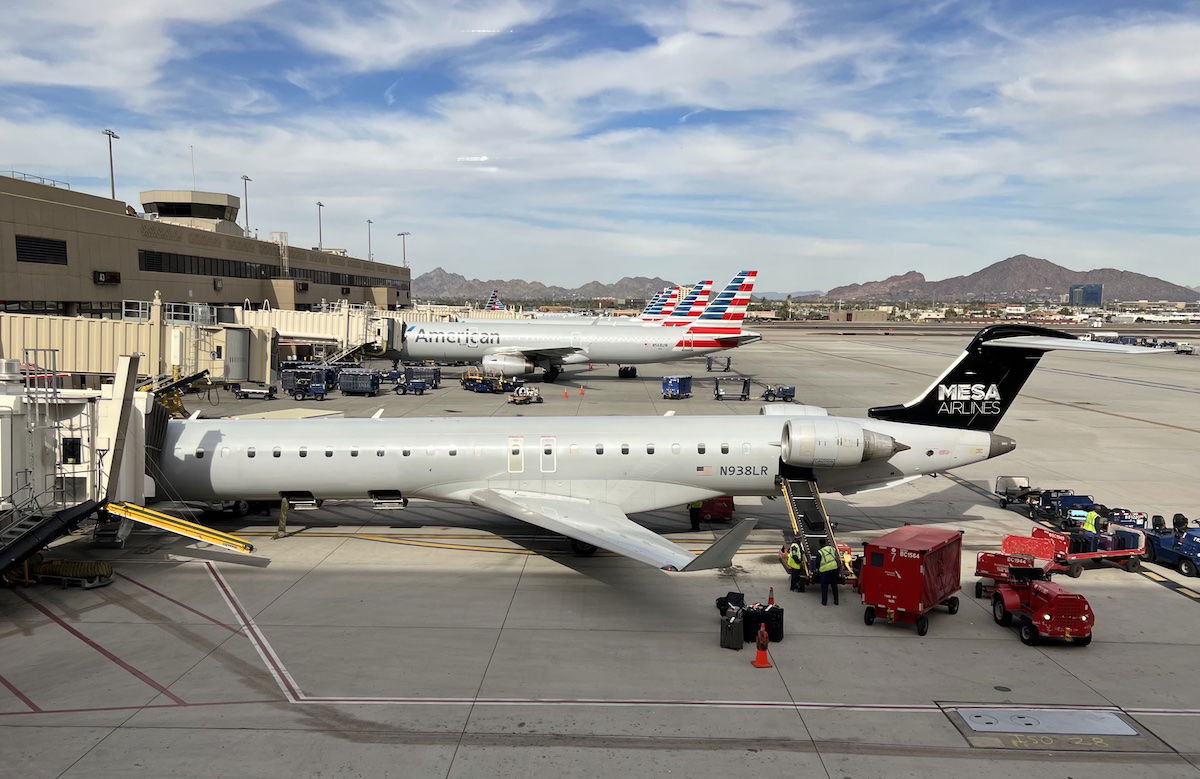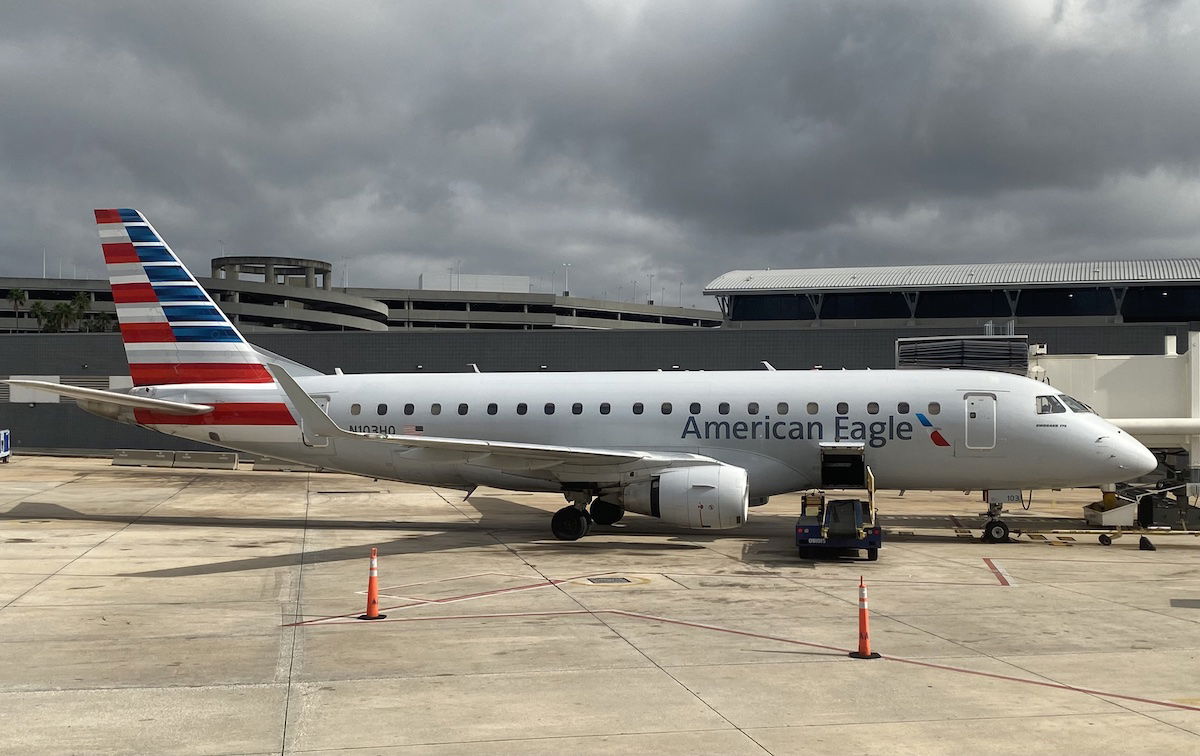The United States’ latest airline merger has just been announced, though most consumers will probably never even know…
In this post:
Republic Airways & Mesa Air plan to merge
Republic Airways Holdings and Mesa Air Group have announced that they’ve entered into a definitive agreement to merge in an all-stock transaction. Upon closing, the company will maintain the Republic branding, and will remain NASDAQ-listed under the new ticker symbol “RJET.”
Republic will continue to operate regional flights on behalf of American, Delta, and United, under their existing capacity purchase agreements, and Mesa’s operation will support United under a new 10-year capacity purchase agreement, as a result of this transaction. The combined airline will operate a fleet of around 310 Embraer E170/175 jets, with over 1,250 daily departures.
The combined company is expected to produce revenue of $1.9 billion annually, with a pretax margin of 7-9% (excluding one-time merger and integration costs), and adjusted EBITDA in excess of $320 million. As part of the transaction, Mesa will not contribute any debt to the combined airline. The argument is that Mesa shareholders will benefit from the ownership of a better capitalized airline with increased economies of scale, due to Republic’s stronger financial position.
When the transaction closes, the expectation is that Republic shareholders will own 88% of the combined company’s common shares, while Mesa shareholders will own a minimum of 6%, and up to 12%, depending on Mesa’s achievement of certain pre-closing criteria. The deal is expected to close in the fourth quarter of 2025.
Here’s how Republic CEO Bryan Bedford (also Trump’s nominee for FAA Administrator) describes this:
“We’re thrilled to combine the Republic and Mesa teams to create one of the world’s leading Embraer Jet operators. Republic and Mesa share a common mission to connect communities across America, and we believe that we can better achieve that mission together. With this combination, we are establishing a single, well-capitalized, public company that will benefit from the deep expertise of Republic and Mesa associates, creating value for all stakeholders well into the future.”
Here’s how Mesa CEO Jonathan Ornstein describes this:
“Today’s announcement is an exciting next step in Mesa’s more than 40-year history, one that represents the best outcome for our shareholders, employees, and all of our stakeholders. By bringing the best of our organizations together, we will create a regional carrier that continues to connect communities across America while providing advancement opportunities to our employees.”

This consolidation seems pretty sensible
The regional airline business model is an interesting one. For the most part, these airlines operate regional jets on behalf of the major carriers, on flights that are marketed as American Eagle, Delta Connection, United Express, etc.
During good times, it’s a pretty safe business model, since the major carriers take most of the risk, and the regional airlines are paid to provide the capacity. However, ever since the pandemic, it sure has been a rocky time for these regional carriers:
- With the pilot shortage that existed for a few years, we saw pay rates at regional carriers increase massively, eating into a lot of the economic advantage these airlines provide; for that matter, many regional airlines had to park planes, since they couldn’t even find enough pilots
- Regional airlines are heavily reliant on the major carriers, so if their contracts don’t get renewed they’re in huge trouble, as it’s hard to operate profitably otherwise, aside from some niche Essential Air Service (EAS) routes, and those are quite competitive
- The major carriers also largely have wholly owned subsidiaries, and they’ve largely been shifting capacity to those, since there’s more upside there
Republic has proven to be a pretty resilient airline, while Mesa has struggled a bit more. For example, in early 2023, American and Mesa had a breakup, though United ended up taking over much of the capacity that was dropped. As you’d expect, the challenge is that if United dropped that agreement, Mesa would be in a very rough spot.
There’s power in scale, and I think it’s a win-win for Republic to be a larger, more stable operator. Unlike other airline mergers, I don’t think there’s much downside to the traveling public with this, since these airlines largely don’t even sell their own tickets, but rather strike agreements with major airlines.
Instead, this will simply lead to some synergies, and if anything, preserve capacity, given Mesa’s financial struggles.

Bottom line
Republic Airways and Mesa Air plan to merge, to form an even larger regional airline. Republic has proven to be a reliable operator, while Mesa has struggled financially, so the combination should help to preserve capacity. As part of this deal, Mesa also has a new 10-year agreement with United, which the airline desperately needs.
This is logical consolidation, though definitely not the sexiest airline consolidation imaginable. Let’s see what’s next. 😉
What do you make of Republic Airways acquiring Mesa Air?





I wonder what the future for these regional airlines holds as the big airlines continue to operate their own smaller flights. Perhaps a merger with a big airline could be in the future.
I have a suspicion that Scott Kirby has a hand in this.
I would have to agree. Likely allows UA to get it's money/investment out of Mesa with Republic footing the bill. I'd rather have my eggs in the Republic basket than the Mesa basket. Smart move.
MESA' Ejet program was strong when I was there on the CRJ side. I think this is good.
As an airline pilot (and one who formerly worked very recently for the regionals)…this consolidation makes sense.
Mesa retired their CRJ900 fleet as they became an all E175 operation. Republic operates all E-Jets with a ton of E175s for United, and so functionally the onboard product is the exact same, with Mesa just flying for United while Republic flying for the big 3.
Passengers won’t notice any different. Flight attendants wear the same uniforms...
As an airline pilot (and one who formerly worked very recently for the regionals)…this consolidation makes sense.
Mesa retired their CRJ900 fleet as they became an all E175 operation. Republic operates all E-Jets with a ton of E175s for United, and so functionally the onboard product is the exact same, with Mesa just flying for United while Republic flying for the big 3.
Passengers won’t notice any different. Flight attendants wear the same uniforms at both (maybe different wings but nobody’s gonna notice). Pilots probably will have to get used to new SOPs but functionally, it’s the same airplane they’ll probably be flying the same way.
Mesa has been struggling financially for the longest time. Republic seems to know what they’re doing. So this would make sense as a way for Republic to expand (and eliminate a competitor in the process).
Begs the question what will happen to existing and new United Aviate candidates and what the prevailing Union will be (ALPA vs Teamsters). But time will tell.
Spirit's CEO just stepped down, so yup.
"Let’s see what’s next."
My money is on Spirit either merging with another carrier or liquidating within the next few weeks. The new tariffs will definetly hurt the struggling airline even more.